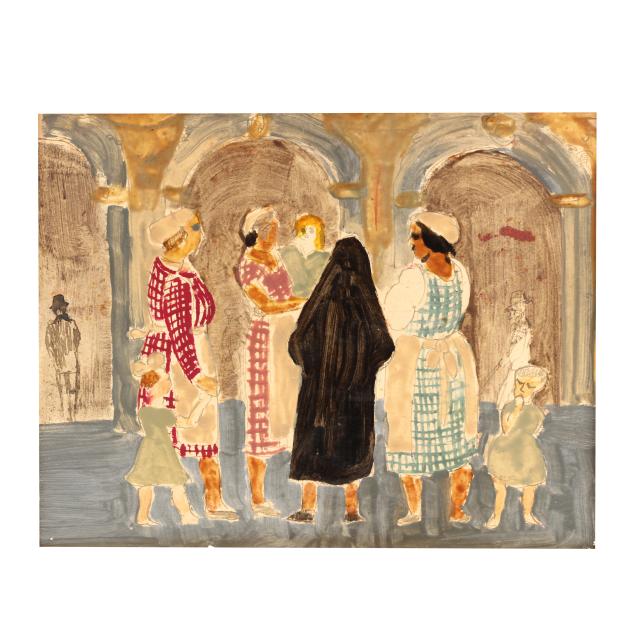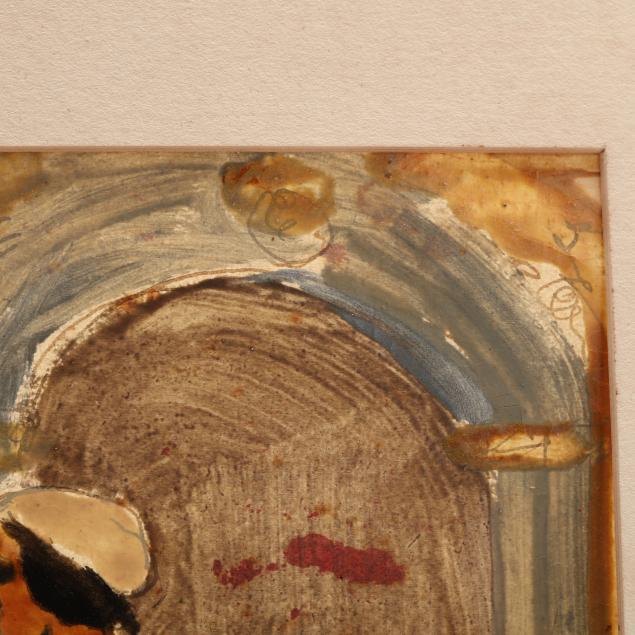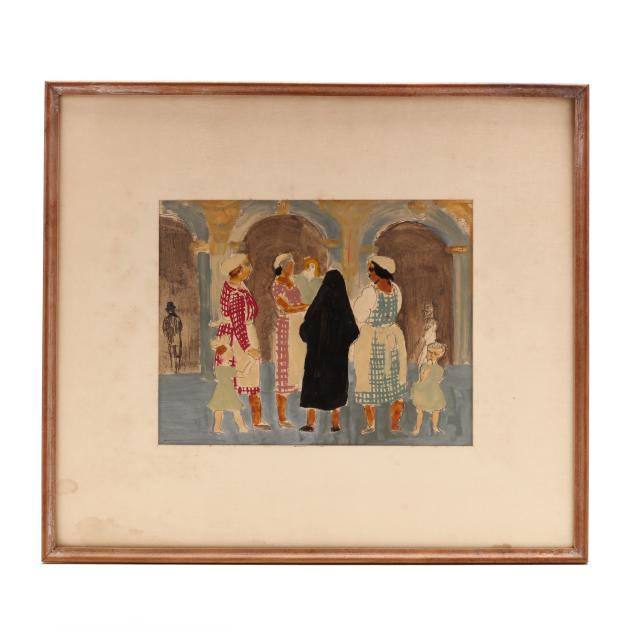
Lot 1073
Attributed Charles Demuth (American, 1883-1935), Figural Study
Explore more items like this one.
Visit our Fine Art Department Fine Art
Lot Details & Additional Photographs
Sheet size 8 1/2 x 11 in.; Frame dimensions 16 x 18 in.
Charles Demuth was an influential American modernist painter known for his contributions to the Precisionist movement. Born in Lancaster, Pennsylvania, Demuth initially studied at Drexel Institute of Art, Science, and Industry and later at the Pennsylvania Academy of Fine Arts, where he developed a strong foundation in traditional art techniques. His time in Paris in the early 20th century introduced him to the avant-garde, particularly Cubism and Fauvism, which heavily influenced his later work. Demuth's unique style combined the structural clarity of Cubism with a distinctly American focus on industrial and urban landscapes.
Demuth is best known for his iconic work I Saw the Figure 5 in Gold (1928), a tribute to poet William Carlos Williams, and a prime example of his Precisionist style. His paintings often depicted factories, grain elevators, and urban architecture, rendered with sharp lines and bold geometric forms.
The original drawing offered in this auction is a sketch for Demuth’s iconic painting, Buildings, Lancaster, currently in the collection of the Whitney Museum of American Art in New York. This painting is from a series he completed between 1927 and 1935 depicting the architecture of Lancaster, Pennsylvania. The painting, and drawing, depicts several structures adjacent to the steel and concrete grain elevator of John W. Eshelman & Sons in Lancaster. The grain elevator was a favorite of Demuth, and is depicted in the painting, My Egypt, also in the Whitney’s collection.
Despite his fragile health, Demuth produced a significant body of work that bridged European modernism and American art, leaving a lasting legacy as one of the key figures in 20th-century American painting. His work remains celebrated for its innovation and its evocative portrayal of America’s industrial age. Demuth’s unique perspective elevated the everyday objects and landscapes of Americans in a rapidly industrializing economy to monumental reverence.
Small area of loss to sheet at lower edge; old linen tape hinges to upper corners of sheet; toning to sheet and mat.








